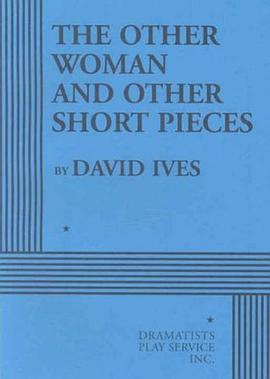
The Language of the Gods in the World of Men pdf epub mobi txt 電子書 下載2025
- 理論
- 未讀完
- 思想史
- 曆史
- 印度
- 南亞
- theory
- nonfiction
- 神話學
- 語言學
- 宗教研究
- 古代文明
- 符號學
- 曆史
- 文化研究
- 人類學
- 哲學
- 神秘學

具體描述
In this work of impressive scholarship, Sheldon Pollock explores the remarkable rise and fall of Sanskrit, India's ancient language, as a vehicle of poetry and polity. He traces the two great moments of its transformation: the first around the beginning of the Common Era, when Sanskrit, long a sacred language, was reinvented as a code for literary and political expression, the start of an amazing career that saw Sanskrit literary culture spread from Afghanistan to Java. The second moment occurred around the beginning of the second millennium, when local speech forms challenged and eventually replaced Sanskrit in both the literary and political arenas.Drawing striking parallels, chronologically as well as structurally, with the rise of Latin literature and the Roman empire, and with the new vernacular literatures and nation-states of late-medieval Europe, "The Language of the Gods in the World of Men" asks whether these very different histories challenge current theories of culture and power and suggest new possibilities for practice.
著者簡介
Sheldon Pollock is William B. Ransford Professor of Sanskrit and South Asian Studies at Columbia University, and former George V. Bobrinskoy Distinguished Service Professor at The University of Chicago. His previous publications include Literary Cultures in History: Reconstructions from South Asia (California, 2003), Cosmopolitanism (2002, with Homi Bhabha et al.), and The Ramayana of Valmiki, Volume III: Aranyakanda (1991), and Volume II: Ayodhyakanda (1986).
圖書目錄
Preface and Acknowledgments
Introduction
Culture, Power, (Pre)modernity
The Cosmopolitan in Theory and Practice
The Vernacular in Theory and Practice
Theory, Metatheory, Practice, Metapractice
PART 1. THE SANSKRIT COSMOPOLIS
Chapter 1. The Language of the Gods Enters the World
1.1 Precosmopolitan Sanskrit: Monopolization and Ritualization
1.2 From Resistance to Appropriation
1.3. Expanding the Prestige Economy of Sanskrit
Chapter 2. Literature and the Cosmopolitan Language of Literature
2.1. From Liturgy to Literature
2.2. Literary Language as a Closed Set
2.3. The Final Theory of Literary Language: Bhoja’s Poetics
Chapter 3. The World Conquest and Regime of the Cosmopolitan Style
3.1. Inscribing Political Will in Sanskrit
3.2. The Semantics of Inscriptional Discourse: The Poetics of Power, Malava, 1141
3.3. The Pragmatics of Inscriptional Discourse: Making History, Kalyana, 1008
Chapter 4. Sanskrit Culture as Courtly Practice
4.1. Grammatical and Political Correctness: The Politics of Grammar
4.2. Grammatical and Political Correctness: Grammar Envy
4.3. Literature and Kingly Virtuosity
Chapter 5. The Map of Sanskrit Knowledge and the Discourse on the Ways of Literature
5.1. The Geocultural Matrix of Sanskrit Knowledge
5.2. Poetry Man, Poetics Woman, and the Birth-Space of Literature
5.3. The Ways of Literature: Tradition, Method, and Stylistic Regions
Chapter 6. Political Formations and Cultural Ethos
6.1. Production and Reproduction of Epic Space
6.2. Power and Culture in a Cosmos
Chapter 7. A European Countercosmopolis
7.1. Latinitas
7.2. Imperium Romanum
PART 2. THE VERNACULAR MILLENIUM
Chapter 8. Beginnings, Textualization, Superposition
8.1. Literary Newness Enters the World
8.2. From Language to Text
8.3. There Is No Parthenogenesis in Culture
Chapter 9. Creating a Regional World: The Case of Kannada
9.1. Vernacularization and Political Inscription
9.2. The Way of the King of Poets and the Places of Poetry
9.3. Localizing the Universal Political: Pampa Bharatam
9.4. A New Philology: From Norm-Bound Practice to Practice-Bound Norm
Chapter 10. Vernacular Poetries and Polities in Southern Asia
10.1. The Cosmopolitan Vernacularization of South and Southeast Asia
10.2. Region and Reason
10.3. Vernacular Polities
10.4. Religion and Vernacularization
Chapter 11. Europe Vernacularized
11.1. Literacy and Literature
11.2. Vernacular Anxiety
11.3. A New Cultural Politics
Chapter 12. Comparative and Connective Vernacularization
12.1. European Particularism and Indian Difference
12.2. A Hard History of the Vernacular Millennium
PART 3. THEORY AND PRACTICE OF CULTURE AND POWER
Chapter 13. Actually Existing Theory and Its Discontents
13.1. Natural Histories of Culture-Power
13.2. Primordialism, Linguism, Ethnicity, and Other Unwarranted Generalizations
13.3. Legitimation, Ideology, and Related Functionalisms
Chapter 14. Indigenism and Other Culture-Power Concepts of Modernity
14.1. Civilizationalism, or Indigenism with Too Little History
14.2. Nationalism, or Indigenism with Too Much History
Epilogue. From Cosmopolitan-or-Vernacular to Cosmopolitan-and-Vernacular
Appendix A
A.1 Bhoja’s Theory of Literary Language (from the Srngaraprakasa)
A. 2 Bhoja’s Theory of Ornamentation (from the Sarasvatikanthabharana)
A.3 Sripala’s Bilpank Prasasti of King Jayasimha Siddharaja
A.4 The Origins of Hemacandra’s Grammar (from Prabhacandra’s Prabhavakacarita)
A.5 The Invention of Kavya (from Rjaekhara’s Kavyamimamsa)
Appendix B
B.1 Approximate Dates of Principal Dynasties
B.2 Names of Important Peoples and Places with Their Approximate Modern Equivalents or Locations
Publication History
Bibliography
Index
· · · · · · (收起)
讀後感
評分
評分
評分
評分
用戶評價
買瞭3年多 終於想起來讀。正如Samyak當年說的一樣,Pollock的magnum opus是沒人有能力/資格review的。不過後半部分講vernacularization確實de-emphasize瞭Tamil語料的重要性(原因有二:一是他不會讀,Dravidian裏他隻會Telugu和Kannada; 二是跟前半部分的理論框架嚮衝突)。有趣的是:很多歐洲學者常將Sanderson的Śaiva Age和Pollock的Cosmopolis理論作對比,但美國學者卻很少或不提Sanderson瞭。
评分非常有意思!梵語世界的cosmopolism與vernacularization,發現梵語誕生就是跨域共通語不需要帝國機構的從上而下的統治就在南亞-東南亞完成瞭文化-政治輸齣(共享)這就跟古漢語/字在東亞的傳播和共享有很多相通之處(但後者在中世以後並未發生明顯的白話化因此和其他世界語世界區彆開來瞭)同時也和依賴武力徵服的拉丁語與依賴賢能的新波斯語這兩種由地方語發展成的世界語區分開來。梵語作為一種宗教-神的世界的語言(憑藉跨域跨族強大美學錶達能力與語法穩定性)通過文學-政治的方式組織瞭鬆散的人的世界擴展為南亞世界語 而又在公元後第二個韆年開始這種運動的反運動(尤其是各地與世界語的譜係遠近和白話化的關係和歐洲可類比但多元程度完全不同)具體論述的例子有點太專業瞭好多看不懂 可能需要些南亞研究的背景
评分買瞭3年多 終於想起來讀。正如Samyak當年說的一樣,Pollock的magnum opus是沒人有能力/資格review的。不過後半部分講vernacularization確實de-emphasize瞭Tamil語料的重要性(原因有二:一是他不會讀,Dravidian裏他隻會Telugu和Kannada; 二是跟前半部分的理論框架嚮衝突)。有趣的是:很多歐洲學者常將Sanderson的Śaiva Age和Pollock的Cosmopolis理論作對比,但美國學者卻很少或不提Sanderson瞭。
评分買瞭3年多 終於想起來讀。正如Samyak當年說的一樣,Pollock的magnum opus是沒人有能力/資格review的。不過後半部分講vernacularization確實de-emphasize瞭Tamil語料的重要性(原因有二:一是他不會讀,Dravidian裏他隻會Telugu和Kannada; 二是跟前半部分的理論框架嚮衝突)。有趣的是:很多歐洲學者常將Sanderson的Śaiva Age和Pollock的Cosmopolis理論作對比,但美國學者卻很少或不提Sanderson瞭。
评分非常有意思!梵語世界的cosmopolism與vernacularization,發現梵語誕生就是跨域共通語不需要帝國機構的從上而下的統治就在南亞-東南亞完成瞭文化-政治輸齣(共享)這就跟古漢語/字在東亞的傳播和共享有很多相通之處(但後者在中世以後並未發生明顯的白話化因此和其他世界語世界區彆開來瞭)同時也和依賴武力徵服的拉丁語與依賴賢能的新波斯語這兩種由地方語發展成的世界語區分開來。梵語作為一種宗教-神的世界的語言(憑藉跨域跨族強大美學錶達能力與語法穩定性)通過文學-政治的方式組織瞭鬆散的人的世界擴展為南亞世界語 而又在公元後第二個韆年開始這種運動的反運動(尤其是各地與世界語的譜係遠近和白話化的關係和歐洲可類比但多元程度完全不同)具體論述的例子有點太專業瞭好多看不懂 可能需要些南亞研究的背景
相關圖書
本站所有內容均為互聯網搜索引擎提供的公開搜索信息,本站不存儲任何數據與內容,任何內容與數據均與本站無關,如有需要請聯繫相關搜索引擎包括但不限於百度,google,bing,sogou 等
© 2025 book.quotespace.org All Rights Reserved. 小美書屋 版权所有




















